Using Google Analytics 4 for local SEO can help you better understand your local business’s online performance more effectively–but do you know which reports to track? With many dashboards and metrics available, navigating which ones to monitor and how to configure them can be challenging.
Below, we’ll break down the top three local SEO reports in GA4, how to use each one, and the benefits of leveraging these tools for your local brand.
Using Google Analytics 4 for Local SEO Reporting: 3 Dashboards You Should Be Tracking to Optimize Local Online Performance
Here are the top three reports you should be using in Google Analytics 4 for local SEO and why they’re key to boosting your online presence to nearby customers.
1. Demographic Details Report
Using Google Analytics 4 for local SEO can help you better understand exactly who your target audience is. When you have data-driven insights into the demographics and behaviors of people who visited your website, you can refine your local marketing strategies.
The Demographics Details report does just that. Before diving into this dashboard, let’s show you how to get there and additional insights you can reference with it.
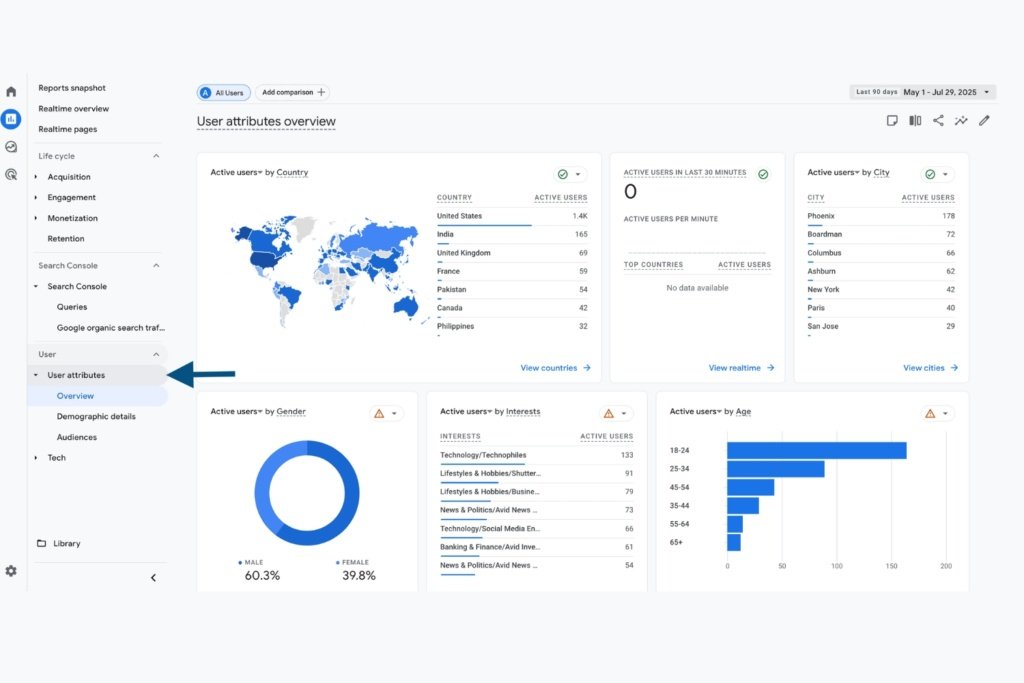
Under the User tab, you’ll find a User Attributes overview that shows the following information:
- Users by country
- Users by city
- Users by gender
- Users by age
- Users by interests
- Users by language
- Users in the last 30 minutes
The overview displays the location data of your website visitors’ browsers over a set period. It even breaks down by active, new, and returning users. This data shows how well you’re retaining existing local users and attracting new ones.
You may find that your site is attracting new users in specific cities, showing strong brand awareness in that area, so you can focus on other neighborhoods where it’s underperforming. You may also find that returning users are declining in one location, so you can optimize your site for customer loyalty in that area, like referral marketing program initiatives.
Now moving on to the Demographic Details report, which is found under the User Attributes tab.
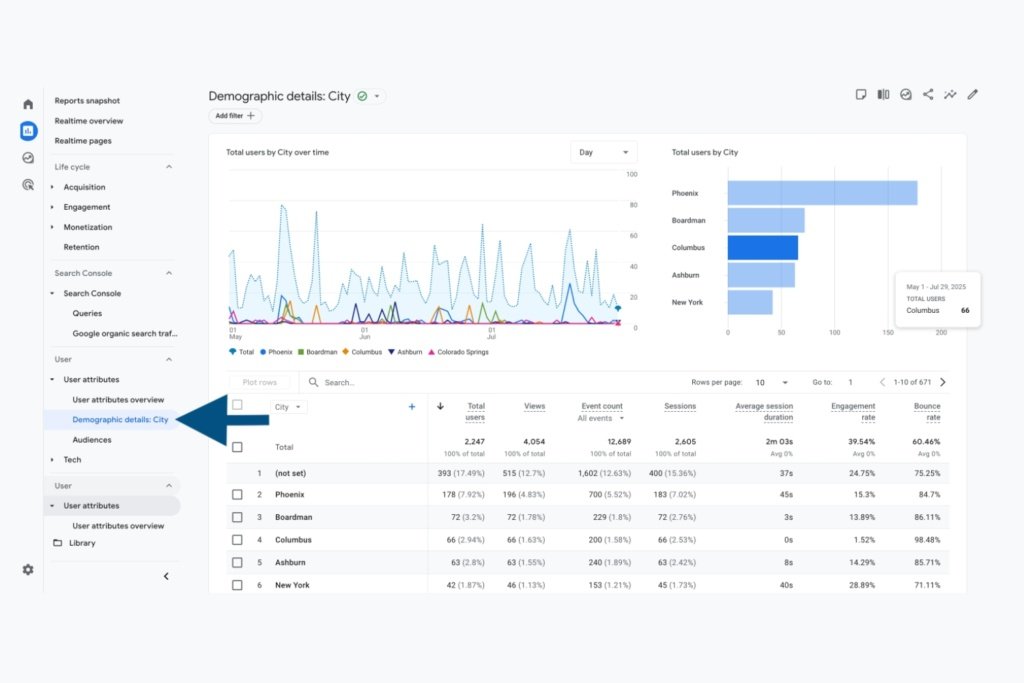
As a local business, we recommend customizing this GA4 report by city so you can see which surrounding neighborhoods bring the most people to your site. You can also identify gaps in local areas you may not be attracting enough users from.
That way, you know which areas to prioritize in your navigational types of SEO content, like service location pages or paid search campaigns.
The Demographics Details report can be configured with a long list of metrics, but we suggest using the following:
- Total users
- Views
- Event count (website entrances)
- Sessions (website browsing)
- Average session duration (how long people browsed your site on average)
- Engagement rate
- Bounce rate
This data shows local user behavior trends across different cities to discover where people are engaging with your site the most and the least.
2. Traffic & User Acquisition Report
The next dashboard you should be using Google Analytics 4 for local SEO is the Traffic and User Acquisition report. While these are two separate dashboards, they both cover key information about the people your site attracted, the channel they entered from, and how they interacted with your site over a set period.
User Acquisition Report
Under the Acquisition tab, you’ll find the User Acquisition dashboard, which breaks down the behavior metrics of your website visitors by channel group.
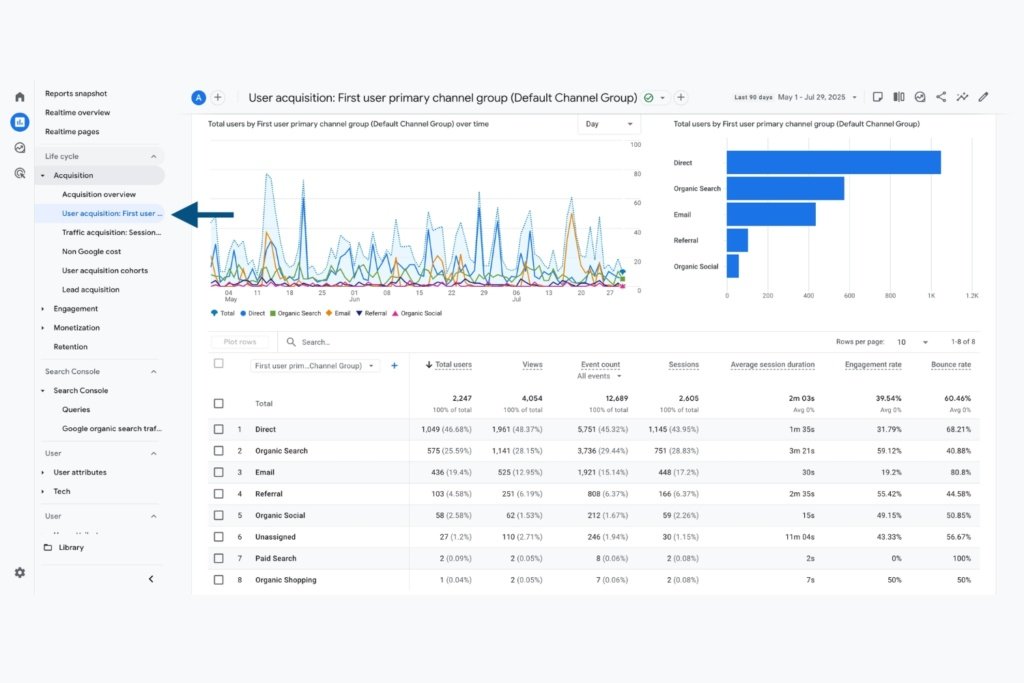
It displays the following channels from which your users entered your site:
- Direct
- Organic search
- Referral
- Organic social
- Paid search
- Organic shopping
- Unassigned
Knowing the sources that acquired the most users unlocks key opportunities for the marketing channels you use. If you find that email marketing has been the top source for generating the most local users to your site, you can use your resources more efficiently because you know it’s successful.
In contrast, you can find areas of improvement, such as lower-performing local service ads that don’t bring many users, so you can spend your marketing budget in other channels.
Traffic Acquisition Report
The Traffic Acquisition report is also under the Acquisition tab, which breaks down the behavior data of the general traffic your site attracted.
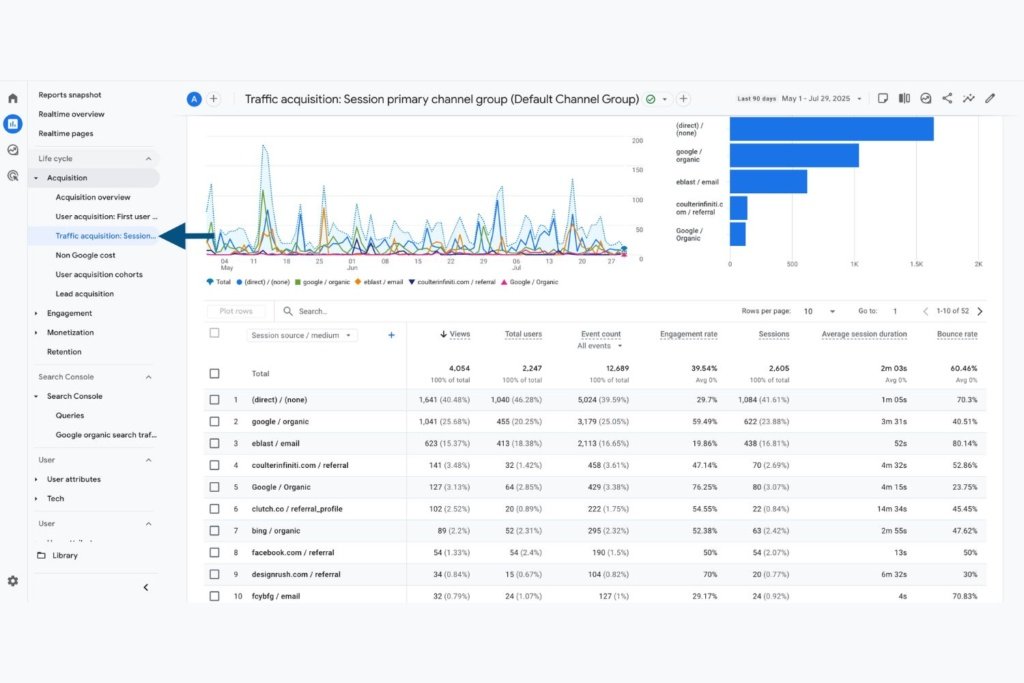
The difference is that the Traffic Acquisition report shows multiple sessions of traffic from the same user, while the User Acquisition report only shows attributes from a user’s first visit.
When it comes to local SEO data, this dashboard is especially useful because it displays Google Business Profile traffic metrics as “GoogleLocalListing / organic.”
However, you must have UTM parameters set up on your GBP listing so GA4 can track this data. It’s basically a custom URL you’ll place as the link to your website on your GBP, so when someone clicks it, it’ll show in the Traffic Acquisition report. You’ll need to configure your dashboard to “Session source / medium” to monitor your GBP traffic metrics.
The “GoogleLocalListing” is the source, while the medium is organic. This data is crucial to seeing how well your GBP listing performs in visibility and engagement from local organic traffic.
For example, if you find that your GBP is not a top traffic generator, you can use this as an opportunity to optimize it for improvement. You may need to revisit the local keywords used in your business description or weekly posts to strengthen the profile’s online visibility.
In addition to GBP, you’ll find other traffic source metrics, such as Facebook, email blasts, and organic Google search. These insights also uncover how well your site’s content ranks by showing how much local traffic is generated from search engines (organic Google search). That way, you have a better understanding of targeting the right keywords in your local SEO strategy.
3. Landing Page Report
While the Demographic Details and User & Traffic dashboards focus on local marketing metrics, the Landing Page report is for conversions. As a local business, you also need to gain more customers, and this report measures how successful your landing pages are at converting leads.
The Landing Page report is under the Engagement tab.
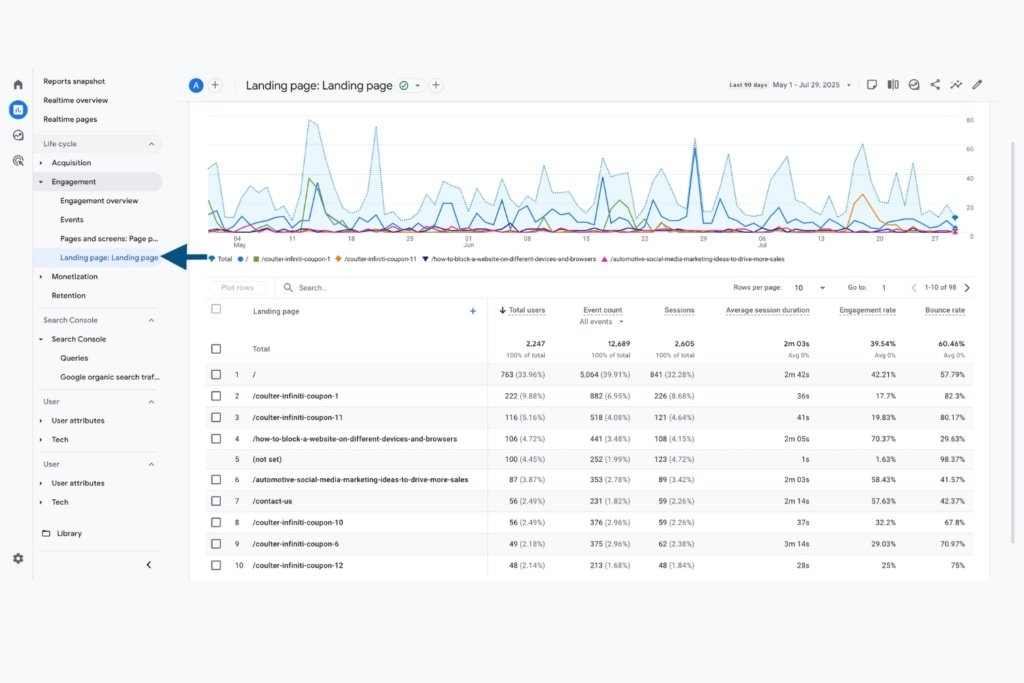
You’ll also find the same location page data as the Demographic Details and User & Traffic Acquisition reports. However, for your landing pages, you can discover key local SEO insights that may be helping or harming conversions.
For example, if you find your landing page generates the most entrances to your site but has a high bounce rate, it’s not converting leads for a reason. Your landing page may not be user-friendly for mobile devices or may have a slow loading time, making it harder for local potential customers to buy from you–even though they’re clearly interested.
From conversions to traffic, using Google Analytics 4 for local SEO is about seeing what’s currently working and what’s not.
Maximize Your Local Business Visibility & Stand Out From the Competition Online
Are you not seeing the results you want for your local business? Let us help you stand out from your competitors.
At Reach Marketing Pro, we’re a full-service digital agency with extensive experience in all aspects of local SEO, including GA4 reporting, Google Business Profile posting, and landing page optimization. We’ll also provide quarterly GA4 reports to ensure all local SEO strategies continuously and effectively support your bottom line.
Ready to maximize your local business’s footprint?
Learn more about our local SEO services or contact us to get started today!

